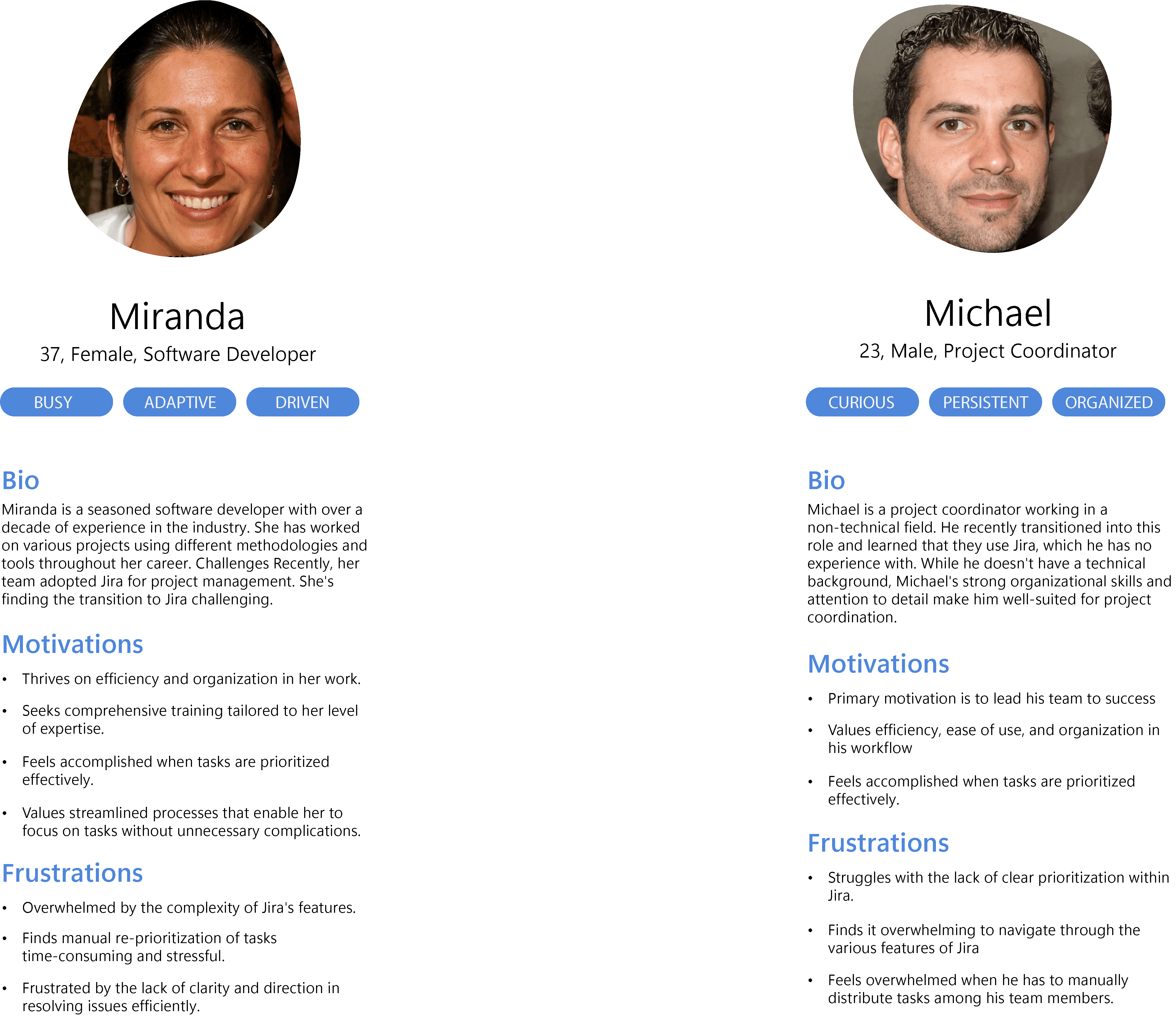[Case 04]
Jira Companion - AI Integration in the Jira Workflow
Jira Companion - AI Integration in the Jira Workflow
Atlassian X SUEDE Designathon 2023
[Project Overview]
"Jira Companion" is a concept designed for the SUEDE X Atlassian Designathon 2023, a competition held by Atlassian in collaboration with Sydney University Experience Design Society (SUEDE). We were tasked to make Jira - a project management tool, more accessible to new users and reduce the learning curve by utilizing Artificial Intelligence. The competition lasted for a total of 3 days.
[My Role]
UX/UI Designer, UX Researcher
[Timeline]
October 2023 (3 Days)
[Tools]
Figma, Miro, Jira, Canva
Plenti - Your affordable pantry tracking companion
Interactive Product Design Studio (DECO3200) - The University of Sydney
[Project Overview]
In this unit, we were tasked with iteratively conceptualizing, designing, and prototyping a solution that aligns with one or several of the 17 Sustainable Development Goals identified by the United Nations. We were required to consider both the social and technical aspects of our concepts, while also being aware of potential sociocultural resistances to novel ideas. The project encouraged us to take a creative, provocative, or utilitarian design approach, challenging social norms when appropriate. Additionally, our final concepts needed to be interactive, ensuring they effectively engage users while contributing to a sustainable future.
[The Brief]
Jira has a steep learning curve
"Today, when people want to start managing work in Jira, they have to learn new concepts and technical terms to get the most out of it. This is unacceptable because everyone should easily be able to get access from Jira. We envision AI simplifying complex tasks, saving people time and empowering teams to drive their mission forward."
[Our approach]
Designing the agile way
[Research plan]
Our research phase started off by conducting a competitive analysis. This allowed us to compare the features offered by competitor project management tools and also evaluate how competitors integrated AI technologies into their platforms to enhance user experience.
This was followed by conducting surveys on our target users (newly inducted Jira users) to get quantitative data on their pain points. Surveys were the preferred method of data collection in this case as it was the quickest way to gather a large volume of data given our extremely short timeframe.
[Competitor Analysis]
Addressing these gaps would require the integration of AI driven features such as natural language processing and predictive automated workflow creation into Jira.
[Surveys findings]
[Key identified issues]
[Refining our problem space]
[Personas]
[Redesign goals & vision]
Make it simple, humanize the interface
[Solution]
[Solution]
[Final Prototype]
[Key Learnings]
















